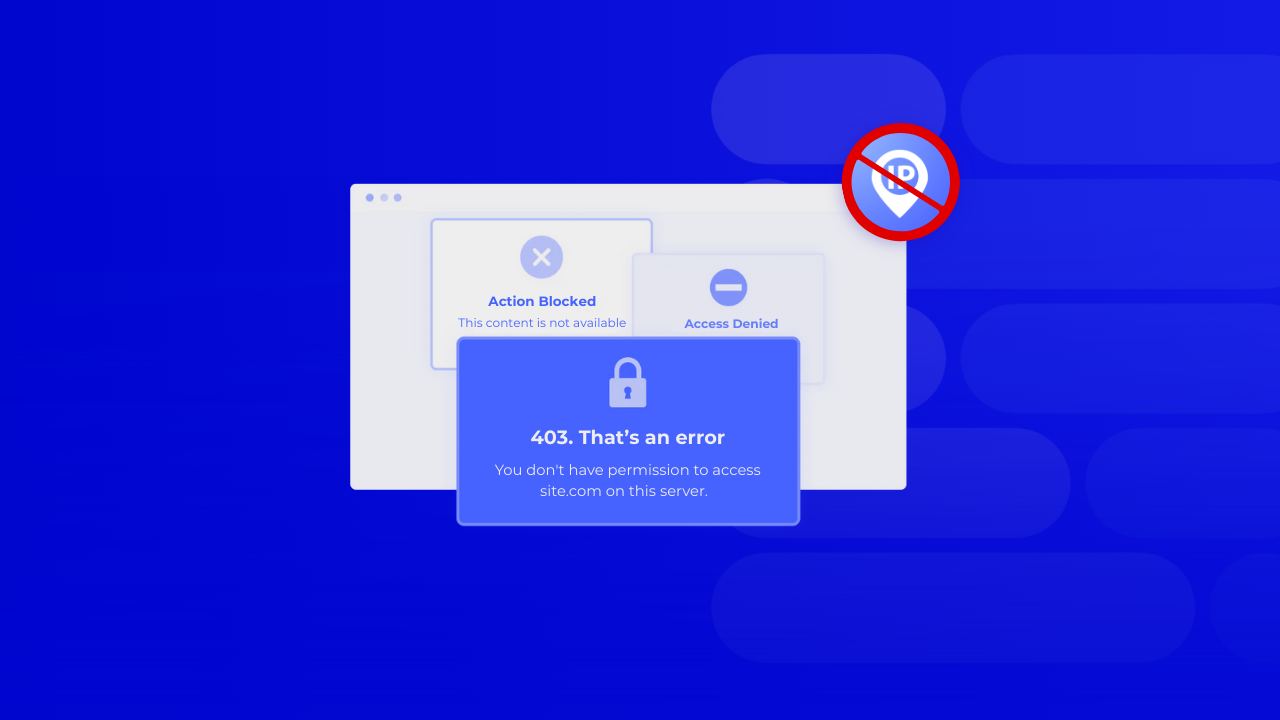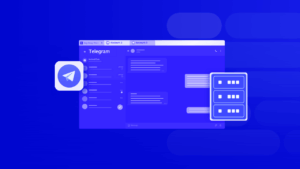IP address blocking is one of the toughest tools used by moderators and administrators of various sites to restrict access to undesirable persons. With such blocking, the web server stops responding to requests from the blocked IP address. Often, not just one IP address is blocked, but an entire subnet, such as an entire office or home network. In this detailed guide we will understand what this is, and also find out what to do if your ip has been banned.
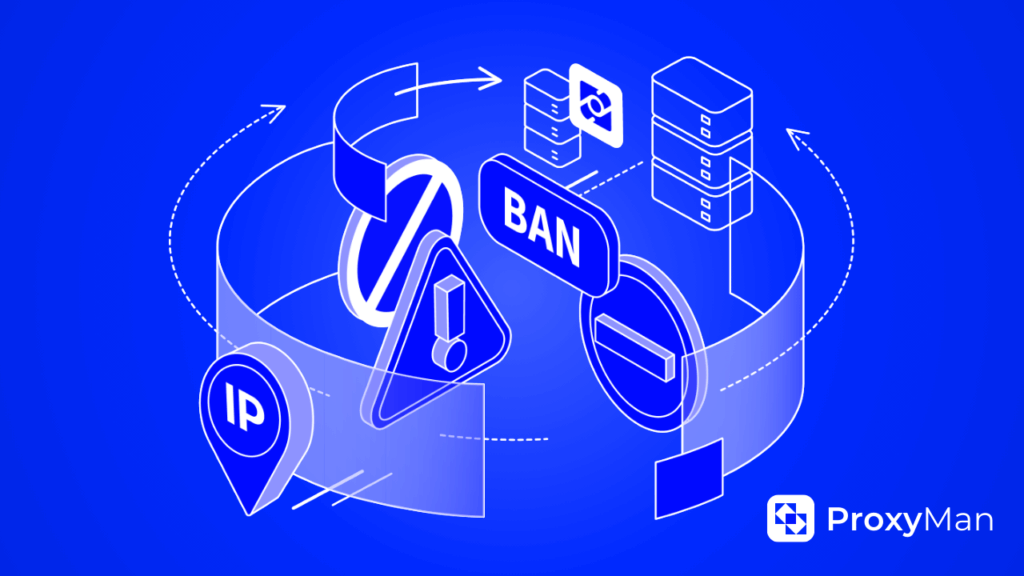
What is an IP Ban
IP ban is a measure that restricts access from certain IP addresses to websites and services. An IP address is a unique numerical identifier for each device connected to the Internet. By blocking these addresses, organizations can control who accesses their online resources.
Ip banned meaning that all requests from this address are automatically denied. Users attempting to connect will likely see an error message or be redirected to another page indicating that their IP is not allowed.
There are several methods for blocking IP addresses, including:
- Blacklisting: Complete denial of access for specific IP addresses.
- Whitelist: Access is only allowed from specified IP addresses.
- Geo-Blocking: Blocking based on the geographical location of the user. For example, some sites are inaccessible to users from certain countries.
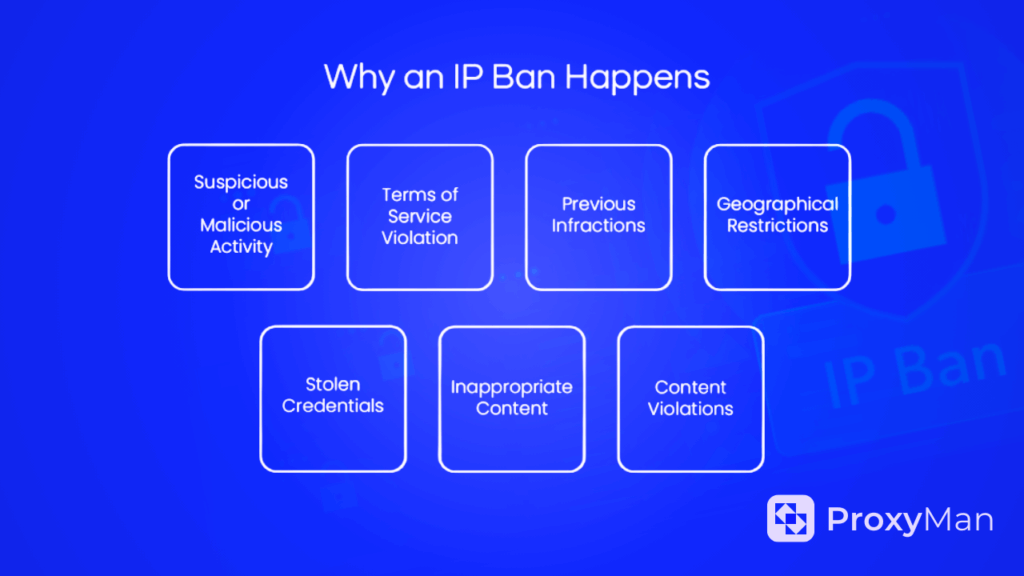
Frequent Reasons Behind an IP Ban
IP bans serve a variety of purposes, primarily related to security, order, and compliance with rules and regulations. Here are some key reasons why IP ban is imposed:
- Security measures. IP address blocking is often used to improve security by blocking access by malicious users or suspicious activities. Websites and online platforms use IP address bans to prevent potential threats and protect their systems from cyberattacks.
- Protecting online communities. Online communities and forums use IP bans to maintain a positive and respectful environment. They prevent troublemakers from causing harm, spamming, or engaging in harassment.
- Enforcement of Terms of Service. Many online services and platforms have terms of service agreements that users must abide by. IP blocking is used to enforce these terms by restricting access to users who violate the rules.
- Preventing unauthorized access. IP address blocking is a powerful tool to prevent unauthorized access to sensitive data and resources. They are hired by organizations to protect their private information and assets.
What to Do If Your IP Has Been Banned
The best thing, of course, is to simply follow the rules of the site and not get banned. In case of blocking by IP address, registration under a new name will not help the user. But there are several measures that will help bypass ip ban and use the Internet in full.
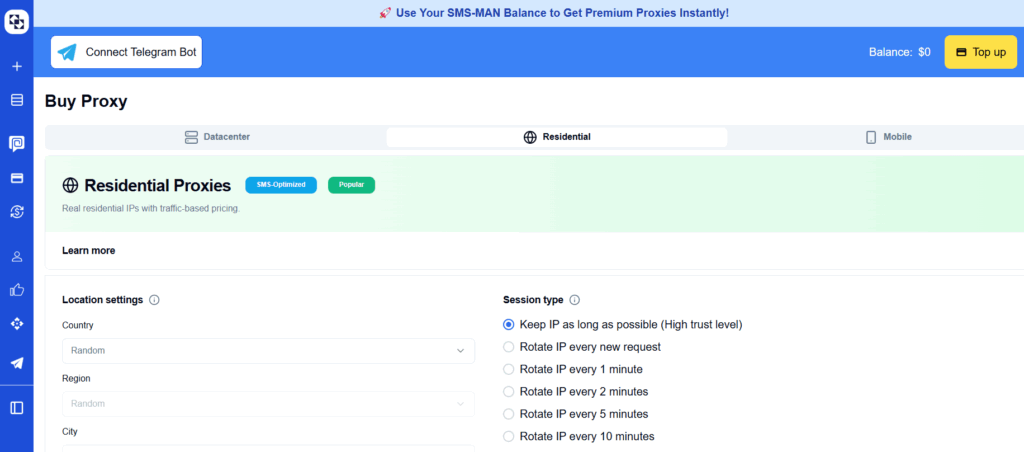
Change Your IP Address with a Proxy Server
One of the most effective ways to deal with the problem is to install a proxy. This is an intermediary server between your computer and the service you are accessing. It substitutes your IP for its own. Clients of quality proxies do not arouse suspicion of antifraud systems (software systems for preventing fraudulent transactions). When choosing a provider, pay attention to the country, the size of the IP base, and the type of proxy.
One of the most convenient proxy bypass services is PROXY-MAN. The platform provides high-performance proxy services for users all over the world. The company offers fresh IP addresses, a user-friendly control panel, flexible pricing policy and a customer-oriented approach. The proxies provided by proxy-man.com ensure a high level of anonymity and security, protecting users from online threats and providing unlimited access to the Internet.
Bypass IP Ban by Resetting Your MAC Address
Some platforms block not only the IP address but also the MAC address. To spoof the MAC address, you can use special tools that are available on different platforms. For example, “MAC Changer” is often used on Linux and “Technitium MAC Address Changer” on Windows.
To change the MAC address of your computer, you need to follow the steps below:
- Go to Settings on your computer.
- Select “Network and Internet”.
- Then, go to “Change adapter settings”.
- Right-click on the Internet adapter and click “Properties”.
- Select “Client for Microsoft Networks” and then click “Customize”.
- Go to the “Advanced” tab, select “Network Address”.
- Create a new MAC address, copy and paste it into the “Value” field.
- Click “Ok” and wait a few seconds.
It is important to remember that sites most often only see the IP address, not the MAC address. Therefore, this method can be effective when the ban is applied at the local network level, such as in a campus or corporate environment
Clear Browser Cache and Cookies
Clearing browser cache and cookies is not a direct method of circumventing blocking, but may help to eliminate problems with accessing websites if the blocking is related to local browser data. However, clearing cache and cookies may result in temporary inconveniences such as slower loading of web pages, loss of saved settings on sites, and the need to re-enter accounts.
Cache is a temporary data storage of websites, which speeds up their loading, but causes errors when overflowing. How to get around an ip ban by clearing the cache:
- Through web browser settings (Google Chrome, Mozilla Firefox, Safari, Microsoft Edge, Yandex.Browser).
- Using hotkeys (Ctrl+Shift+Delete (Windows), Command+Shift+Delete (macOS)). In the window that opens, select “Cached images and files” or a similar item, specify a time range (e.g., “All time”) and click “Delete” or “Clean”.
- Through extensions (e.g. Cache Cleaner) – allow you to delete the cache for individual sites or the entire browser.
Clearing cookies:
Cookies contain information about previous activities on the site, which may be a reason for blocking. To clear cookies, you need to:
- In Google Chrome: go to “Settings” (three dots in the upper right corner), go to “Privacy and Security”, click “Cookies and other site data” and then “All cookies and site data”, select “Delete all” and confirm deletion.
- In Mozilla Firefox: go to “Settings” (three lines in the upper right corner), go to “Privacy and security” and then “Cookies and site data”, click “Delete data”.
- After clearing the cache and cookies, it is recommended to restart the browser for the changes to take effect.
Reinstall or Remove the Blocked App
This method does not always help to bypass ip-ban, but still some people use it. A few ways to bypass IP address blocking:
- Reboot the router. If your ISP uses dynamic IP addresses (usually on home networks), restarting your modem or router can assign a new IP address. This can help bypass a ban if it is associated with a previous address. However, if a static IP address is used or the ISP reassigns the same pool of IP addresses, this method will not work.
- Connect to another mobile or Wi-Fi network. Connecting through another internet network may give you a different IP address, allowing temporary access. However, if the platform also tracks device fingerprints or session data, the user may still be blocked.
FAQ
Q: Why is IP address blocking used?
A: IP address blocking is used to restrict access to websites and services from certain addresses. It is a security measure to prevent unwanted or malicious activity.
Q: Is it possible to avoid ip address blocking?
A: There is no way to avoid IP address blocking, as websites and online services may restrict access from certain IP addresses to sites and services. However, there are ways to check for blocking and, if necessary, bypass it.
Q: Why do I need a proxy to bypass an ip address?
A: A proxy server is an intermediary program between the device from which the user accesses the Internet and the resources visited. The main task of a proxy server is to hide or substitute the user’s data for the sites he visits.

